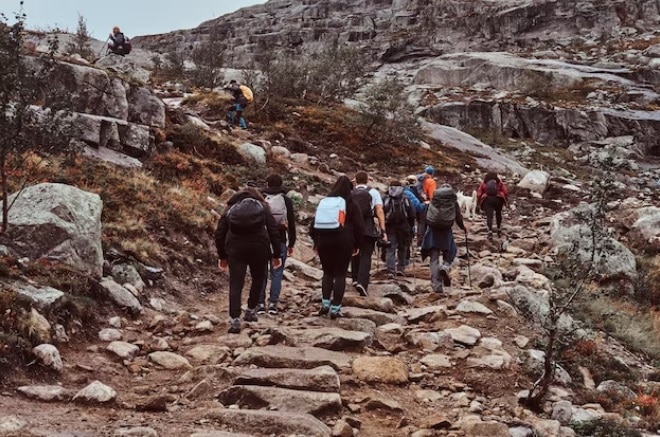Conquering Mount Kilimanjaro, the highest peak in Africa, is a dream for many adventure enthusiasts. Standing tall at 5,895 meters, this dormant volcano in Tanzania offers several routes for climbers, but the Marangu Route is one of the most popular. Dubbed the “Coca-Cola route” for its accessibility and the abundance of amenities, Marangu presents an excellent choice for both novice and seasoned climbers. But the big question remains: should you opt for the Marangu Route 5-day climb, or extend it to 6 days? Let’s delve into the intricacies of this epic journey.
The Marangu Route: A Snapshot
Unlike other routes to Kilimanjaro’s summit, the Kilimanjaro Marangu Route is the only one that offers hut accommodation. The trek usually starts from the Marangu Gate to Mandara Hut, then onto Horombo Hut, onto Kibo Hut, and finally Uhuru Peak. This route is also the most direct to the summit, and thus has a higher traffic of climbers.
The Marangu Route is often perceived as the easiest route to Kilimanjaro’s summit, but it’s essential not to underestimate the challenge. The altitude acclimatization can be tough, especially if you opt for the 5-day climb. The overall success rate is lower than other routes, mostly due to climbers rushing their ascent.
Marangu Route: 5 Days or 6 Days?
The 5-day Marangu Route climb is a whirlwind adventure that takes climbers through rainforests, alpine meadows, and lunar landscapes before reaching the peak. However, the fast pace offers less time for acclimatization, making it more strenuous and increasing the risk of altitude sickness. The 5-day route typically follows this itinerary:
- Day 1: Marangu Gate to Mandara Hut.
- Day 2: Mandara Hut to Horombo Hut.
- Day 3: Horombo Hut to Kibo Hut.
- Day 4: Kibo Hut to Uhuru Peak to Horombo Hut.
- Day 5: Horombo Hut to Marangu Gate.
On the other hand, the 6-day Marangu Route climb includes an extra day at Horombo Hut, providing climbers with a valuable acclimatization day. This increases the chances of a successful summit and reduces the risk of altitude sickness. The itinerary usually looks like this:
- Day 1: Marangu Gate to Mandara Hut.
- Day 2: Mandara Hut to Horombo Hut.
- Day 3: Acclimatization day at Horombo Hut.
- Day 4: Horombo Hut to Kibo Hut.
- Day 5: Kibo Hut to Uhuru Peak to Horombo Hut.
- Day 6: Horombo Hut to Marangu Gate.
Making Your Decision
When considering the 5-day or 6-day Marangu Route climb, your decision should primarily revolve around your physical fitness, prior experience with altitude, and your overall comfort with a quicker ascent. The 6-day climb provides a safer and more comfortable journey, ensuring better acclimatization. However, the 5-day climb might be the choice for you if you are confident in your physical abilities and have a tight schedule.
Keep in mind that no matter which itinerary you choose, proper preparation is crucial. Regular training, a balanced diet, and staying hydrated are key to a successful Kilimanjaro climb. Consulting with your doctor and preparing for altitude sickness can also be beneficial.
The Unforgettable Journey on the Marangu Route
Regardless of whether you choose a 5-day or 6-day journey, the Marangu Route guarantees an unforgettable experience. From lush rainforests to arid, otherworldly landscapes at higher altitudes, and the sense of accomplishment when you reach Uhuru Peak, the highest point in Africa, it’s an adventure you’ll cherish forever.
Each day offers new, diverse sceneries, and challenges, helping you connect with nature in a unique and profound way. And with proper preparation and a spirit for adventure, climbing Kilimanjaro via the Marangu Route can truly be a once-in-a-lifetime journey to the roof of Africa.











 +255 769 654036
+255 769 654036 +255 769 654036
+255 769 654036 +255 769 654036
+255 769 654036






 Rated
Rated
Am an experienced Kilimanjaro mountain guide and a safari organiser, I have been doing this work for over 15 year now.